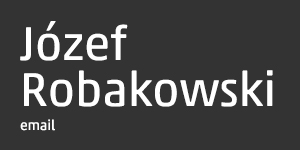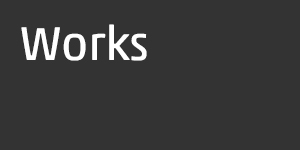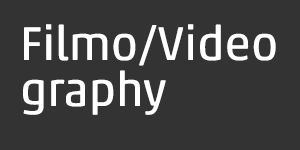Personal
Kata Krasznahorkai, „... I reject temporality”
Extended Cinema and Material Cinema, Grzegorz Borkowski talks
Kata Krasznahorkai, "... I reject temporality"
An Interview with Józef Robakowski, 29th Dec 2008, Fair 04/I-2009
Józef Robakowski is the grand seigneur of Polish expanded cinema, photography and art theory, he is the organizer of legendary exhibitions and screenings and is a major reference point for generations of young Polish filmmakers as a professor of the renown Łódź Film Academy. His unique experiments on film and photography from the 1970s are in many ways strongly related to the western Expanded Cinema movement - which he continues with a striking consequence up till today using different media. This coverage is an attempt to fill a gap in Western experimental-cinema-history and re-set the demarcation lines of this term with the aesthetically and theoretically highly similar but in its roots and sources absolutely different Polish Expanded Cinema-tradition and "re-expand" the Expanded Cinema.
This extensive interview was made on an adventurous trip to Robakowski's home-town Łódź with the chief-editor of fair, Wolf Guenther Thiel, Mario Duhanic, our photographer and me on a cold end-December winter-day in 2008. We neither had an idea about Łódź neither who is going to expect us in the person Józef Robakowski. He received us with a very warm welcome at his home, his friend and coauthor of the work "Attention: Light" Wieslaw Michalak made a tremendous job by translating our conversation which was highly concentrated and lasted three hours - in the first round. Robakowski later showed us the legendary place of screening and exhibitions, his Exchange Gallery (and former flat) in the centre of Łódź (called ironicaly "Manhattan"), the Łódź Film School where he is lecturing for over twenty years and the Jewish cementery which is one of the largest of its kind in Europe. So it became slowly clear where he suggests us to localize the Polish experimental scene: on the edge of history, western film-tradition and the underground place of - exchange. We are very thankful to him for helping us detect his unique concept of art and let us print some of his unpublished or yet not accessible writings as well.
Kata Krasznahorkai: Mr. Robakowski when you've started your groundbreaking experiments in film in the early 1970s in Poland have you been aware of the concept mainly represented by Gene Youngblood to dismantel the traditional borders of cinema and getting to a new, broader definition of the moving image? In your attempts to question "reality" by the new media do you see yourself in the tradition of the expanded cinema of the late 1960s?
Józef Robakowski: For me cinematography that actually moves beyond the limits means that what is really cinema is an actual performance and not a celluloid. We wanted to expand cinema literally and make ours become the new textbook that all should use. Another aspect of this issue in Poland is that the Łódź Film Academy was quite free until 1968 but after '68 it became much more supressed, explanating itself in a rigid defintion of what is film, what is the Polish leading avantgarde. This is where my works and the Workshop of the Film Form [1] arise; we defined ourselves very much countering these definitions; our idea was to subvert the status quo and that is where I and my collegues come from.
KK: How could you define the special Polish version of the expanded cinema?
JR: It was more poetical and more musical. The Workshop of the Film Form is one of the premier Polish avantgarde groups of the 1970s and I was something like a founding member of it. It was very much a departure of the traditional mainstream of fiction and documentary film, which at that time were practiced. By now Workshop of the Film Form turned out to be another status quo in Poland but in the '70s it was very much against common cinematography and was never accepted in the Łódź Film Academy as a legitimate thing.
KK: What was the idea behind this Polish film-revolution?
JR: The basic idea was to expand cinema. To open up cinema for all possibilities, all media not just film but later also video, music, theatre, poetry.
KK: I suppose this opening of the cinema had an immanent, maybe unwillingly apparent political dimension - in opposite to the american version but very similar to the expanded cinema-concept of Valie Export and Peter Weibel.
JR: Yes, of course. Well, it is very interesting, because people in the West very naturally think about the filmmakers and artists in the East as political and politicized.
The only way to expand was to explicitly exclude apparent politics. Ironically the only way to make political art was to exclude politics. By doing that you were making a statement. I am making my work as I like. It is very hard to explain to Westerners why it is so important to keep politics away, why turning to abstraction, why these neo-avantgarde works were so important and so popular in Central-Eastern Europe. Exactly because of that.
Wolf Guenter Thiel: What about Edward Krasiński [2] - he s very political and into abstraction as well?
JR: He was an absolute personality. There is just a new pavillion of the Museum of Modern Art in Łódź called MS [3]. Krasiński is presented there in a very new and powerful way. These traditions overlap each other. But the link between Henryk Stażewski and Edward Krasiński is even closer.
KK: Do you feel your works are influenced by the same tradition?
JR: Yes, absolutely. Krasiński's ideas about art have their own quality which is very close to me because he was a gentry as well.
KK: A gentry, so you mean an aristocrat?
JR: Yes, so am I. I am from the land-gentry, before the war my family was a big land owner and so were the parents of Krasiński. Poland is very strange in a way like most of the Central European countries because there is practically no way of a "middle class" in comparison to France or Germany where the industrial revolution happened much earlier. Eastern Europe never really arrived at this point and Polish history and society or politics - even today - are essentially polarized between "lower classes", the gentry and a very thin middle class, which is just about to make its way into politics. Because of my status I didn't expect anything from the state of Poland or any institution during the communist period. I was self-sufficient. I didn't have to work or to make any compromises in anyway, I could stay completely independent. It was a very strange thing.
KK: So your position as an independent avantgarde artist was held by your position as a former land-gentry?
JR: In practice it means that I've been completely independent from the state organisations and institutions and I was also independent from what was going on in the art scene. It was a similar situation to the avantgarde-protagonists of early modernism: the dada and surrealist artists from well situated family backgrounds. It was quite like the "romantic german" times, when you have a very high education depending where you come from.
KK: Were your lands located in or around Poznań, the city where you were born?
JR: It was actually Kujavia, near Poznań where we had approximately 600 hectars of land. The main part came from my mothers side. After the collapse of the communist state that part of my past obviously became more relevant. It wasn't really possible to talk about it during communist times, not bringing anything good. But now it has changed, it is kind of re-emerging once again - in many ways in a silly way. I don't actually make much of it but the whole attitude towards this issue has undergone a kind of very interesting transformation.
KK: Did this transformation affect your artistic approach or attitude?
JR: Not really, but three years ago I had an exhibiton in a so called "presidential gallery" in Warsaw [4] which actually presented the surviving photographs of my parents and my "nobility-past" from before the war. This was an official background for me in Poland. That exhibition kind of revealed it and that highly interesting change in attitude towards me as an artist happened.
KK: In a positive way?
JR: In both ways. Many people love that, many hate it but most people have some sort of opinion about this topic.
KK: What are your personal memories about the history of your family?
JR: I was only six months old when the war started and my father, who was a colonel in the Polish army, died during one of the first battles of the war. I have some memories of my single mother with two kids living in a large kind of villa. My mother dug out the body of my father on the battlefield - she was 23 - and moved the body to the cemetery near the place where we lived. That I remember. There were very few witnesses of the funeral that she arranged afterwards and one of the peasants wrote a poem for the funeral that I still have. The daughter of my nanny came a few years ago and brought a cover of a photo-album which was actually empty, the pages ripped out and on the remaining pages there were photographs of her family put instead along with her own monogram in place of the Robakowski family-crest. When this happened she was only a child and now she ripped the pages off for a second time and brought the empty cover back to me. This is a kind of a metaphor what happened in Polish history in general: ripping of pages, pasting your own stories instead and then ripping them again. She felt compelled to bring the remaining things as well, cups, etc. She also felt to apologize for her parents although she was only a child, for what they did. But she still had the photographs as well and these were presented in the mentioned exhibition in Warsaw.
KK: In those crucial years after the Second World War what was your first contact with art? What are your earliest memories of your relation to that time?
JR: I ended up in an orphanage but my mother was the director of this institution, so I was brought up with abandoned children. Most of the children were survivors of the families that were killed by the communists in the late 40s and 50s, not by the war. Even though being a child I was very much aware of how these children became orphans. Many of them tried to escape and run away and I could distinguish quickly that art became the only really autonomous way of life in a place like Poland. At that field you can still regain some degree of freedom and kind of create your own "state". Beyond that everything was controlled by the state. Art remained the place where you could realize your own ideas, have your own personality.
KK: Why did you choose film and photography as your medium?
JR: At that time the simplest and most acceptable way for being an artist in the 1950s was photography. In the 1950s I studied art conservation at the University of Toruń. We had professors who were refugees from Vilnius which was under the control of the Soviet Union. So they escaped to Poland and ended up as teachers and as such they made the students even more aware of what was happening and what the tradition of art was. They focused on the tradition of polish expressionism that before the war became the mainstream of Polish art.
KK: It was 1961 that you formed the experimental artistic collective of the Group ZERO 61 - what was the the main focus of this group?
JR: Art pour l'art, in Opposition to socialist realism. It was formed on the basis to continue pre-war tradition of Polish art in the 1920s and 30s. Constructivism mainly. After that I left for Łódź in 1965 and constructivism, which was very much a tradition here before the war with for example Katarzyna Kobro [5] and Wladyslaw Strzemiński (the founders of the Łódź Academy of Fine Arts). This became the next stage in this development. The Łódź Film Academy, which was very much open at that time to art and was independent from the mainstream.
KK: Did you have any sources of information on paralell western tendencies?
JR: When I was preapring for the entrance exams for the Film Academy the school library I didn't have one single textbook about western art. Not one.The situation was completely tragical. But before my studies in Łódź I had my background in Toruń and those professors from Vilnius made me aware and had some information on western art.
KK: Of what kind?
JR: Dadaism, nothing contemporary, that was impossible. You have to realize that to have such books was punishable and you could end up in prison.
JR: Dadaism, nothing contemporary, that was impossible. You have to realize that to have such books was punishable and you could end up in prison.
KK: How did you experience the 50s in Poland?
JR: 1956-57 was a very characteristic period in Polish art, this was the beginning of a very independent movement in poster art, experimental film, music, theatre, poetry and there was an explosion in creativity in several fields. Very quickly these artists and their works found their way to the west.
KK: There was a one way-road directed to the West but no materials could enter Poland?
JR: Yes. It was the beginning of the so called "in between the worlds period" that means before the second world war, which is based on Katarzyna Kobro and the world of photography, photomontage and films. So in 1958 Polish experimental film got the Grand Prix on the Brussel Film Festival.This was the period of Agnes Warda, Stan Brakhage, Len Lye, John Whitney, Peter Kubelka, Maya Deren, Ken Russel and Jerzy Grotowski. Experimental film makers also had some support from the Film Academy in Łódź.
KK: How did the Workshop of the Film Form relate to this great avantgarde stream of the late 50s?
JR: The Workshop of the Film Form, when it started in the early 1970s was already born in part in opposition of that new avantgarde of 1957. They seemed anecdotal already to their tradition. The Workshop of the Film Form excluded all elements of the post-war avantgarde from it by eliminating any kind of emotion from their films. No humor, no feelings of any kind.The working situation was associated rather with a laboratory for films, meaning that we were working analytically.
KK: Is this emotionlessness not a contradiction to what you said before about the specific characteristics of Polish expanded cinema?
JR: Yes, it is in a way. The Workshop of the Film Form started in the early 1970s which was right after the first edition of GeneYoungbloods book "Expanded Cinema" [6]. They are connected as opposites. This opposition was founded to that text. 1973 there was a big festival in Łódź which was to present the results of the analitical world. It included also some artists from Hungary for example Endre Tót.
KK: Did you have some exchange with Eastern European colleagues?
JR: It was quite difficult but there was some exchange. Members of the Béla Balázs Studio [7] [BBS] were visiting the Film School.
KK: What was the link between the artists from the BBS and the attitude of the Workshop of the Film Form?
JR: Their approach differed very much from ours. In 1979 there was an exhibition in de de Appel Gallery in Amsterdam [8] and these two groups came together in one space in this Exhibition. Gábor Bódy was there and the difference became very apparent between our attitudes. It was clear to us that the BBS-artists stuck much more to tradition, they were much more conservative. We were very much shocked by that.
KK: How could you define this shock on a visual level?
JR: The BBS-Films looked visually as a stepping stone towards classical cinema traditions. Influenced by a traditional kind of feature-filmmaking. We were much more influenced by the expanded cinema-issue and not to tradition in comparison to them. Our films were produced by musicians, painters, sculptors, photographers. Not filmmakers. So we were arguing very hard and shouted each other.
KK: Did you have any contact with that scene after that first collision?
JR: Yes, we became very good friends after that with Gábor Bódy or with Dóra Maurer, who was the closest to the idea that became actually the Workshop of the Film Form. In the Solidarity-period the Polish Institute in Budapest had an exhibition of the Workshop. There was a gigantic crowd of people. Gábor Bódy started Infermental actually there. During that screening in Budapest. That became a really long lasting friendship and we also collaborated with each other. It was completely different from Czechoslovakia where was no experimental cinema at all, there was no video and a much stricter control. No experimental media of any kind. I bought the first video camera with Vera Bódy to Moscow.
KK: The Romanian experimental film-scene is similarly active in a similar direction at the same time as the Polish scene - was there any contact to artists like Geta Bratescu or Ion Grigorescu?
JR: No. Richard Demarco discovered the Romanians very early because they had a great tradition in experimental art. But there was no exchange of any kind This was impossible to that time. It was completely crazy. Extreme experimental cinema really existed only in Poland and to some extent in Hungary.
KK: You visited Documenta in Kassel in 1977 - how did this happened?
JR: It was at the invitation of the German hosts, Birgit und Wilhelm Hein who found us, and we were the only artists from behind the Iron Curtain to exhibit there. Wojciech Bruszewski, Ryszard Waśko, Antoni Mikołajczyk and me had already some contact with Western art at that time because we were exhibiting in Edinburgh through Richard Demarco [9]. Sean Connery came to our show and we made a group photo with him. It was the first time we really became aware of Nam June Paik, Andy Warhol, Charlotte Moorman and especially Joseph Beuys. We had 10-15 invitations all over western Europe [10]. It was in Kassel as well where we met Paul Sharits when he slept on the floor in our place. We met a lots of artists there and saw the video section of Wulf Herzogenrath.
KK: What did you present on the Documenta?
JR: WFF-Films, those listed in the catalogue published by Galen Jospeh Hunter and Łukasz Rotunda in 2004 [11].
KK: How did the public of the Documenta related to these films?
JR: In spite of the friendships we felt somewhat marginal to the mainstream of what was happening at that time. We didn't really felt recognized. We felt different to what was happening in the mainstream of avantgarde art. We were at other points in time. We started a series of experimental works of that time called "mechanical-biological recordings" with elements deriving from structuralist cinema. It was a very different challenge.
KK: How would you define your concept of the "biomechanical recording"?
JR: It is an interaction between the physicality of the human body and its mechanical reproductions as an effect in film. The best illustration for this my film "I am walking" where even the camera registers the movement and is moving together with the body and goes all through the states of it as for example it's being tired.
KK: Do you relate to the body-and physicality-experiments of Bruce Nauman?
JR: The big difference is that there is no montage of any kind in my work. There is only one shot. It is a complete collaboration between art and documentation. There are no intervening states in between. It is tautologic. The attachement of the camera is a mechanical device as the eye, a control of the eye so the camera is actually attached to something else and not guided by the body. The expressiveness introduced by the body-control of the camera became this bridge that connected my work from the 1970s to my newer works starting from the 1980s, so there is a continuity in that process.
KK- How is your work historicized in Polish art history by now?
JR: Art critics in Poland divided my work into two periods: one from the '70s and the other from the late '80s like the political ones in the '70s and from the '80s the "solidarity" works - but I don't see it like that at all. For some artists from the '80s the Workshop of the Film Form ironically is the work of the collaborators with the regime. For example Kieślowski referred to us as collaborators. Ironically enough by removing politics from our work we managed to get some public screenings and some public awareness of our work in the official galleries and institutions.
I could "develop" to a "renown" filmmaker only after the collapse of the communist regime. But there is a new publication coming out soon about the Workshop of the Film Form and in that a new interpretation is that those films were the only independent film experiments from the political situation. So the whole story is going to be re-written.
KK: How do you see your ouevre in this historical relation?
JR: I organized a major exhibition in 1989 where these two positions - the expressionism of the Solidarity period and the conceptualis tradition - could be presented together called "The Dungeons of Manhattan [12]", whereby Manhattan refers to the few high "skycrapers" built during the socialist period in the centre of Łódź. In my opinion for the first time in Poland something evolved that eventually became known was a post-modernist attitude after 1989. In Poland postmodernist art of for example Natalia LL or Zofia Kulik originated straight from conceptual art. So some protagonists who were not participating in the artistic movements of the "expressionism" of the Solidarity period but continued to work in the tradition of the 1970s moved after the collapse of the communist period straight to what I call post-modernism. The traditional Polish conceptualism deluted, disappeared after the massive influences from the West after 1989.
KK: Do you still see yourself in the conceptualist or the post-modernist tradition?
JR: I see myself there where I came from in 1961 - art pour I'art. This concept of art I worked out with others so early is still very much alive for me, but Krasiński stayed in the same tradition as well. We both see ourselves to a certain degree as autonomous and independent from these categories, we see ourselves with detachment and also with humor, of course a sarcastic humor.
KK: Ok, then back to the roots: the definition of "energy" in art had a major and crucial role in the manifestos of the Group ZERO 61 and in your work later on up until today. How could you define this concept aut of the perspective of today?
JR: We had a professor in Toruń in the late '50s or early '60s and he educated us in a tradition that was completely detached from main art criticism in a 19th century sense, understanding art as a curiosity, as a collection of strange objects that would be preserved in the curiosity cabinets in the halls of the nobility. Something to entertain. ZERO 61 organized meetings and an art exhibition on the 1st of April 1961 according to these principles of art - as cabinets of curiosities and strange objects, a kind of modernist "Wunderkammer". And thanks to this approach to see art as a joke we didn't have to follow an official guideline. So in Poland, where there was no traditional dadaism we tried something in that direction. Even though this was a joke it became a landmark in art that subverts the tradition. All students and amateurs who were not trained as artists could do that. But the longer we declared ourselves as amateurs and as a hobbyists the longer we could stay creative.
KK: For what did the definition of "Energeticism" stand for?
JR: It stands for the creative force that liberated creativity. So the physical presence of the actual act of constructing it, making it became the most imporatant element of the process, not the actual work - this energy that was apparent and heavily needed.There was an abandoned metal shop with all the instruments which we adopted as artists - so the appropriation of space itself became also part of the actual work.
W.G.Th: I thought about a Lyotard-lecture he held in 1978 about the issue of "intensity" referring to Nietzsche, as he says what is missing is intensity.There is a lot of pathos and structure but no intenisty he recollects. But for Lyotard this is a modern and not a post-modern phenomena. This seems very parallel to your definiton of the term "energy".
JR: I am of course aware of this interpretation of modern and post-modern theories but my concept of energy is different as it is much closer to Russian constructivism. And also closer to a parallel with the romantic tradition of Rousseau treating the natural impulse of creativity that is detached from pure construction. It is a point of tension inside the works in the act of creating.
KK: Do you transform your definition of the energy also in a formal problem? Does this theory has some formal consequenses?
JR: Yes, that consequence is continuity up to the present. Today this is the main construction point of contemporary art. The tension I mentioned above. So at that point I agree with Lyotard. I can transform this creative energy into other natural elements such as waterfalls as in my latest work "Niagara Waterfall". It was a large installation using a complicated technical device recreating the experience of the energy and monotony of water. Energy as monotony.
KK: If you link energy to monotony this implicates the connection to music in a way to your work "Attention: Light" with Wieslaw Michalak based on Paul Sharits idea [13] - with a strong reference to synaesthetic cinema. What do you think about the problems of perception in a digital world?
JR: My first idea concerning the problem of Sharits was realizing it in the form of a film - there would have been other possible solutions, doing it in many different ways but I loved this new technology although I was also interested whether the 24 frames/second is convertible to motion. And that was actually the point at which I was interested very much in the analogue film how it happens in the brain that 24 frames/second can generate continuous motion on the screen. I made films which were called "optical films" which was very different from Sharits idea. But 20 years later I was curious to remake the idea with a completely new technology.
KK: How can you detect the "new meaning" through these new technological chance in relation to your films made twenty years ago?
JR: It is very different. Because avantgarde filmmakers found a limit, a border of film. But I came from a later generation where analogue film and TV technology became very much fluid. Much more fluid than for the previous generation. It was referred to the Workshop of the Film Form as the real avantgarde, they actually are different from the traditional avantgarde that they respect. They were fluent in another medium - television - but treated it in a different way. And the avantgarde which was purely film avantgarde stayed behind. They couldn't develop. They stop at the avantgarde of the '70s. Valie Export or Peter Weibel were much closer to Paul Sharits and my idea about the limits of the visual medium.
KK: What is the link to expand the visual medium beyond its limits?
JR: The link is biology, human biology. But in my view music is based on human biology. So this is one of the reasons why sound plays such an important role in almost all my work. The waterfall is signified more through sound than through vision. Victor Matjushin had a very interesting concept of nature and energy in his opera "Victory over the Sun". Or Waclaw Szpakowski [14], also educated in Russia who created the concept on a singular line that meanders like an infinite drawing.
KK: This concept seems to have a link in a broader sense to the "Walk a line and follow it" piece by La Monte Young or the endless lines in the desert by the north american Land Art artists as well.
JR: Yes exactly. But Szpakowski directed the hand of his daughter to create this line - as a biological journey to read the page.
KK: Your work entitled "Mechanical drawing" made with a car derives from that Szpakowski-theory?
JR: Yes, mainly but that was a documentary film, so a completely different genre which was a series of documentary films about artists I found very important. I also have to construct environments out ofthe biographies of those people where energy can evolve and gain space. For example besides the galleries in flats like my "Exchange Gallery" in my flat such spaces were also in churches during the communist era where we organized exhibitions - in churches so people could see the show after mass.
KK: Would you do that also today?
JR: No, the people are different now.
KK: You have been teaching for decades in the Łódź Film Academy - do your students also turn against the tradition you represent - as an authority?
JR: Of course (laughs). They have to. But it is also a way of continuity by my students at the Łódź Film Academy who made a similar group like the Workshop of the Film Form recently.The aims of the former Workshop are much better visible in these new works of the students.
KK: This new generation might use your term "energy" as a universal concept - so it works for both the Niagara Falls and a punk band from Moscow?
JR: Yes, this is one of the reason why despite the fact that I am almost seventy years old I still go to punk concerts (laughs). I reject temporality.
KK: Mr. Robakowski, thank you very much for the interview.
1 Workshop of the Film Form was founded in 1970 by the graduates and students of the Łódź Film, TV and Theatre School and is recognized as the creative pulse of the Polish moving image avant-garde of the 1970s, The members were also visual artists, poets, musicians etc. and the Workshop was a locus of enormous artistic experimentation in the 1970s
See also J. Robakowski's essay below and the catalogue edited by Lukasz Rotunda / Galen-Joseph Hunter: The Workshop of the Film Form 1970-1977. Early Film Work from Poland, Warsaw, 2004
2 Edward Krasiński (1925-2004) was one of the leading figoures of the Polish neo-avantgarde. A major retrospective exhibiton in the General Foundation, Vienna showed an extensive selection of his work in 2006. (http://foundation.generali.at/index.php?id=471)
3 www.msl.org.pl
4 Józef Robakowski: Ojciec z albumu, Galeria Prezydencka, Warsaw, 2005
5 Katarzyna Kobro (1898-1951) was one of the most distinguished women sculptors of the inter-war period, working mainly in the constructivist-suprematist style. She also was one of the most tragic figures in Polish, twentieth-century history of art: war exile, loss of some of the works which were tossed on the scrap-heap during the war, the dramatic postwar separation with Władysław Strzemiński, necessity to earn for a living and the maintenance of her child, resulted that Kobro remained in the shadow of Strzemiński, on the margin of the artistic output of the avant-garde of Łódź.
6 Gene Youngblood, Expanded cinema, Toronto and Vancouver: Clarke, Irwin & Company Limited 1970
7 The Béla Balázs Studio, (BBS) for film has been established as early as 1961 in Budapest. While this experimental Studio was supposed to serve the purpose of a well supervised playground for young aspiring film directors, BBS became more and more open for those who have not been involved officially in film production, such as Gabor Body and continous its activities up to the persent day; for example Béla Tarr shot his film-debut in the BBS as well. The Kunsthalle in Budapest hosts its extensive archive: http://www.bbsarchiv.hu
8 Works and Words (international art meeting), De Appel Gallery, Amsterdam, 1979
9 Atelier-72, Polish Contemporary Art Exhibition, Richard Demarco Gallery, Edinburgh, 1972
10 with stations like Torino, Sao Paolo, Knokke/Heist, Antwerpen, Köln, Eindhoven
11 see footnote 1
12 Lochy Manhattanu, Garaze Łódź, 1989
13 this work is currently shown in the Polish Cultural Institute in Berlin in the exhibition "Attention: Light" (6 March - 30 April 2009)
14 The global vision of infinity got its full expression in Wacław Szpakowski' (1883-1973) works. He put the shapes he found in the reality into arrangements of lines rhythmically changing their course, in this way constructing new forms of the real world. These geometrical structures made throughout fifty years between 1900 and 1954 were also treated by him like scores of music discovered in nature. The cycles of drawings always made with just one universal line relating to the visual and sonic as well as the psychological sphere of human experience have become Szpakowski's manner of describing the world. see also: Waclaw Szpakowski (1883- 1973) Die Endlosigkeit der Linie, (French, Netherlandish, English, German), Brussels, 1992. Texts by Jerzy Malinowski, Marc Renwart, Wacław Szpakowski, Anna Szpakowska-Kujawska, Janusz Zagrodzki.







